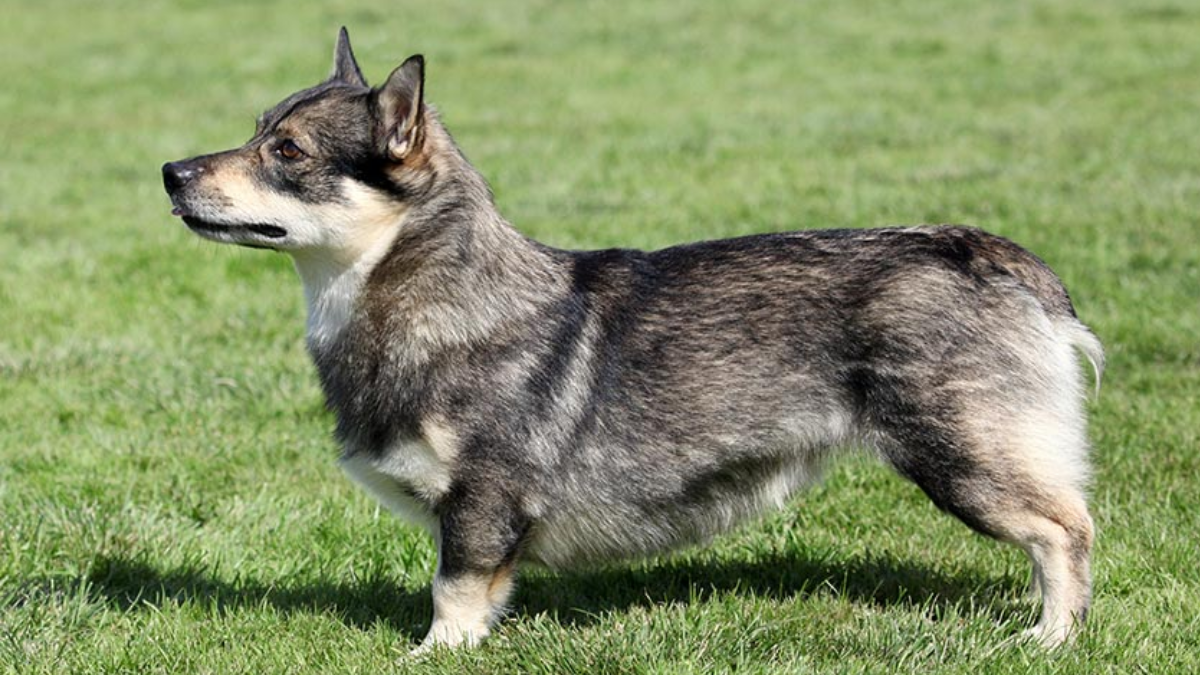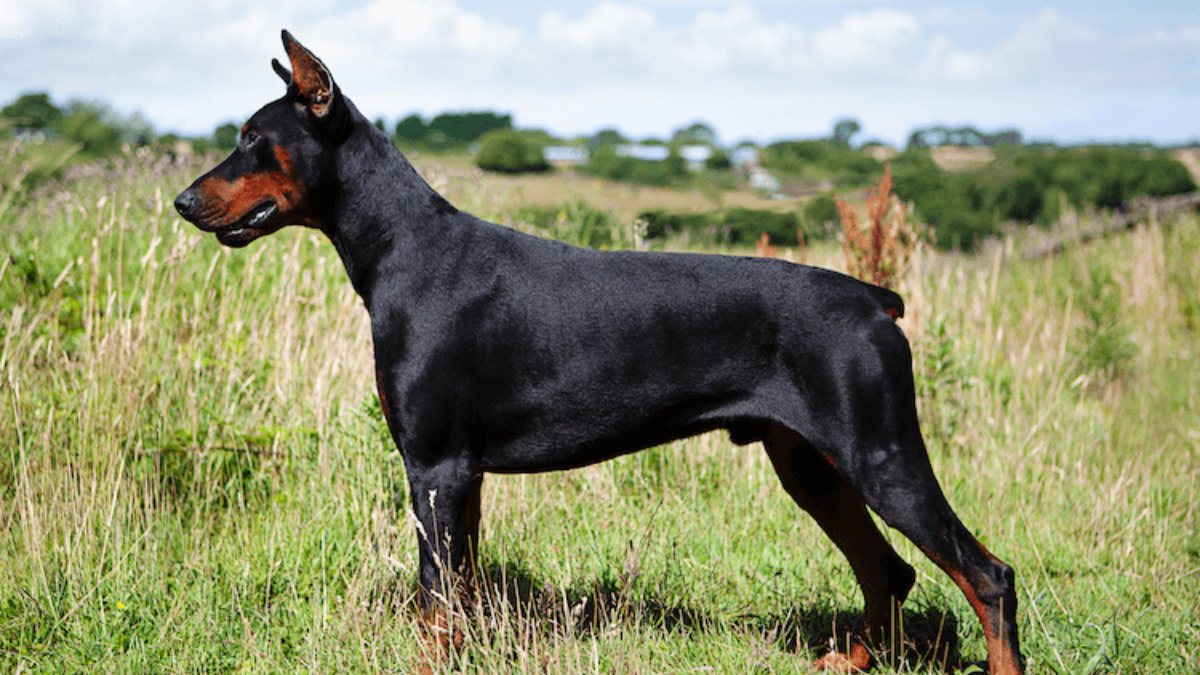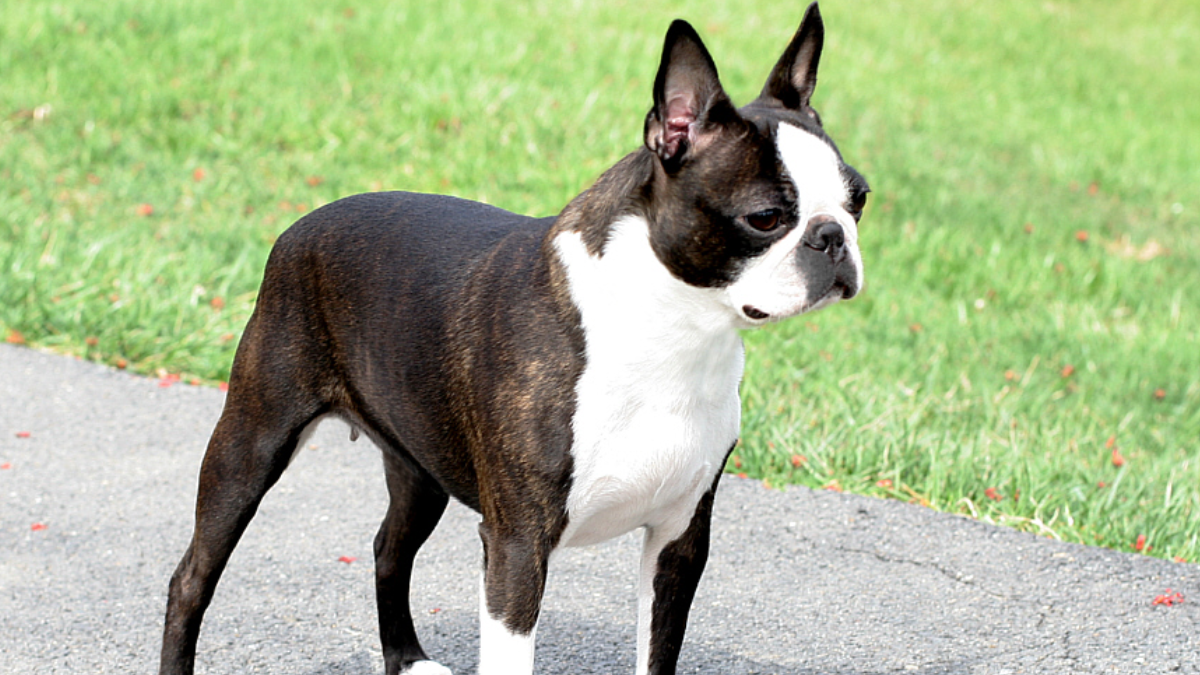Docked-tail dog breeds have become increasingly popular among pet owners due to their unique appearance and distinctive characteristics. Docking refers to the process of removing a portion of the dog's tail, usually for cosmetic or functional reasons.
While the practice of tail docking has been a topic of controversy, many breeds continue to be bred for their docked tails. Among these, the best docked-tail dog breeds stand out for their charm and adaptability, making them beloved companions in many households.

One of the most recognizable docked-tail breeds is the Boxer. This medium-sized dog is known for its playful and energetic personality, making it a popular choice for families with children. Boxers are also highly trainable and make excellent watchdogs. Their docked tails give them a sleek and muscular appearance, adding to their overall charm.
Another well-loved docked-tail breed is the Doberman Pinscher. Initially bred as guard dogs, Dobermans are known for their intelligence, loyalty, and bravery. Their docked tails and cropped ears give them a sleek, powerful look, making them popular in law enforcement and military roles. Despite their tough appearance, Dobermans are incredibly affectionate and loving with their families. They balance their protective instincts with a gentle and caring nature, making them both formidable guardians and devoted companions.
History and Reasons for Docking
Docking, which involves removing part of a dog's tail, has been around for centuries. The reasons behind this practice have changed over time and vary by breed. Historically, tails were docked for functional reasons, like preventing injuries in working dogs. Nowadays, it's often done for cosmetic purposes or to adhere to breed standards. In this section, we'll dive into the history of tail docking and explore the different reasons why certain breeds have their tails docked.

Selective Breeding and Breed Standards
Docking tails has been a practice used to enhance the appearance of certain dog breeds. Breed standards often require a specific tail length, and docking was a way to achieve that standard. The American Kennel Club (AKC) and other kennel clubs have established breed standards that include docking for some breeds, such as the Boxer, Doberman Pinscher, and Cocker Spaniel.
Selective breeding has also played a role in tail docking. Some breeders have docked tails to maintain certain physical and behavioral characteristics in their dogs. For example, hunting dogs were often docked to prevent injury while working in the field.
Working Dogs and Functional Purposes
Docking tails was also done for functional purposes. Working dogs, such as those used for hunting, were often docked to prevent injury while working in rough terrain. The shorter tail would reduce the risk of the tail getting caught in brush or undergrowth.
In some cases, docking tails were done to prevent injury to the dog during certain activities. For example, the tails of some breeds were docked to prevent injury during dog fights, which were once a popular form of entertainment.

Overall, the practice of docking tails has been controversial and is now banned in many countries. While some breeds still have docked tails as part of their breed standard, many breeders are now choosing not to dock tails for ethical reasons.
The Docking Procedure
Docking is a surgical procedure performed on puppies to remove a portion of their tail. This practice is common among certain breeds, such as Boxers, Doberman Pinschers, and Rottweilers. The procedure is usually done when the puppies are between 2-5 days old.
Tail Docking Techniques
There are two main techniques used for tail docking: surgical and banding. In surgical docking, the veterinarian will use a scalpel or surgical scissors to remove the tail. The wound is then closed with sutures. Banding involves placing a tight rubber band around the base of the tail, cutting off the blood supply and causing the tail to fall off. This method is less invasive than surgical docking but can be more painful for the puppy.
Pain Management and Anesthesia
Pain management and anesthesia are important aspects of the docking procedure. The puppies are given local anesthesia to numb the area before the procedure. This helps to reduce pain and discomfort during and after the surgery. Pain medication may also be given to the puppies after the procedure to manage any discomfort.

It is important to note that complications can arise from the docking procedure. Infections, excessive bleeding, and improper healing can occur. The procedure must be performed by a licensed veterinarian who has experience with the technique being used.
Overall, the docking procedure is a controversial topic in the dog breeding world. While some breeders believe it is necessary for the breed standard and the dog's working ability, others argue that it is an unnecessary and painful procedure. Puppy buyers need to research and make an informed decision before purchasing a docked-tail breed.
Breeds with Docked Tails
Docking is the process of removing a portion of a dog's tail for various reasons, including for medical purposes or to conform to breed standards. Here are some breeds with docked tails:
Common Docked-Tail Breeds

Some of the most common docked-tail breeds include the Boxer, Rottweiler, and Doberman Pinscher. These breeds were traditionally used for guarding and protection, and their docked tails were believed to prevent injuries while working.
The Miniature Schnauzer and Jack Russell Terrier are also commonly docked. In these breeds, docking is done for cosmetic reasons to give them a more polished appearance.
Breeds with Naturally Docked Tails
Some breeds are born with naturally short tails, which eliminates the need for docking. The Pembroke Welsh Corgi and Swedish Vallhund are examples of such breeds. They were originally bred for herding, and their short tails helped them avoid getting stepped on by cattle.

The Brittany and Australian Shepherd are also born with naturally short tails. These breeds were developed for hunting and herding, respectively, and their tails were naturally selected for their working abilities.
Other breeds with naturally short tails include King Charles Spaniel, Boston Terrier, Australian Cattle Dog, English Bulldog, Old English Sheepdog, English Springer Spaniel, Catahoula Leopard Dog, Mudi, Parson Russell Terrier, Brazilian Terrier, Croatian Sheepdog, French Bulldog, Australian Stumpy Tail Cattle Dog, Austrian Pinscher, and Bourbonnais Pointer.
Overall, while docking is controversial and banned in some countries, it is still a common practice in certain breeds. It is important to note that docking should only be done by a licensed veterinarian and for legitimate reasons.
Health and Welfare Considerations

Medical Benefits and Risks
Docking a dog's tail is a medical procedure that involves the removal of a portion of the tail. Some breeds are docked for medical reasons, such as to prevent injury or infection. However, there are also many risks associated with tail docking. Pain, complications, and infection are all possible complications of the procedure. Additionally, docking can affect a dog's balance and hygiene and can cause trauma and neuroma.
One of the main medical benefits of tail docking is to prevent injury. Dogs with long tails are more likely to injure their tails, which can cause pain and open wounds. Docking can also prevent infections, as long tails can collect dirt and debris, leading to infection.

However, docking can also cause pain and complications. The procedure involves cutting through skin, muscle, and bone, which can cause significant pain and discomfort. In addition, complications such as bleeding, infection, and open wounds are possible.
Ethical Concerns and Animal Welfare
Docking a dog's tail for cosmetic reasons is a controversial topic, with many animal welfare organizations opposing the practice. Some argue that docking is unnecessary and can cause unnecessary pain and trauma to the dog.
Docking can also affect a dog's ability to communicate with other dogs. Dogs use their tails to communicate a wide range of emotions, from happiness and excitement to fear and aggression. Docking can make it difficult for dogs to communicate effectively, which can lead to socialization issues.
In conclusion, while there are some medical benefits to docking a dog's tail, there are also significant risks and ethical concerns to consider. Dog owners should carefully consider the potential risks and benefits before deciding to have their dog's tail docked.

Legal and Cultural Perspectives
Regulations and Breed Standards
Tail docking is a practice that has been debated for many years in the dog breeding community. Some breeds are traditionally docked to conform to breed standards, while others are docked for practical reasons such as preventing injury. However, in recent years, tail docking has become a controversial practice, with many countries banning it altogether.
In the United States, tail docking is legal, but the American Veterinary Medical Association (AVMA) opposes it unless it is medically necessary. Breed standards vary, but many breeds that were traditionally docked, such as Boxers and Doberman Pinschers, now have breed standards that allow for natural tails.
In Maryland and Pennsylvania, tail docking is legal but must be performed by a licensed veterinarian. Breeders who dock tails themselves may face legal consequences.
Global Views on Tail Docking
Tail docking is a practice that is banned in many countries, including Australia, Canada, and the United Kingdom. In some countries, such as Germany and Sweden, tail docking is only allowed for medical reasons.
The controversy surrounding tail docking has led some breeders to seek alternative methods for achieving breed standards. For example, some breeders of Cocker Spaniels have developed a breed with a naturally short tail, eliminating the need for docking.

Overall, the cultural and legal perspectives on tail docking vary widely depending on the country and breed. While some breeders continue to dock tails to conform to breed standards, others are seeking alternative methods to achieve the same results. The debate over tail docking is likely to continue for many years to come.
Conclusion:
In conclusion, exploring the world of Best Docked-Tail Dog Breeds reveals a curated selection of companions tailored to fit various family dynamics. From the spirited Boxer to the loyal Cocker Spaniel, these breeds offer unique qualities and adaptability, making them cherished additions to any home.
Whether you're drawn to their history, temperament, or appearance, these dogs with docked tails bring joy and companionship to countless families worldwide. Embrace the beauty and versatility of these remarkable breeds as they become beloved members of your family for years to come.




